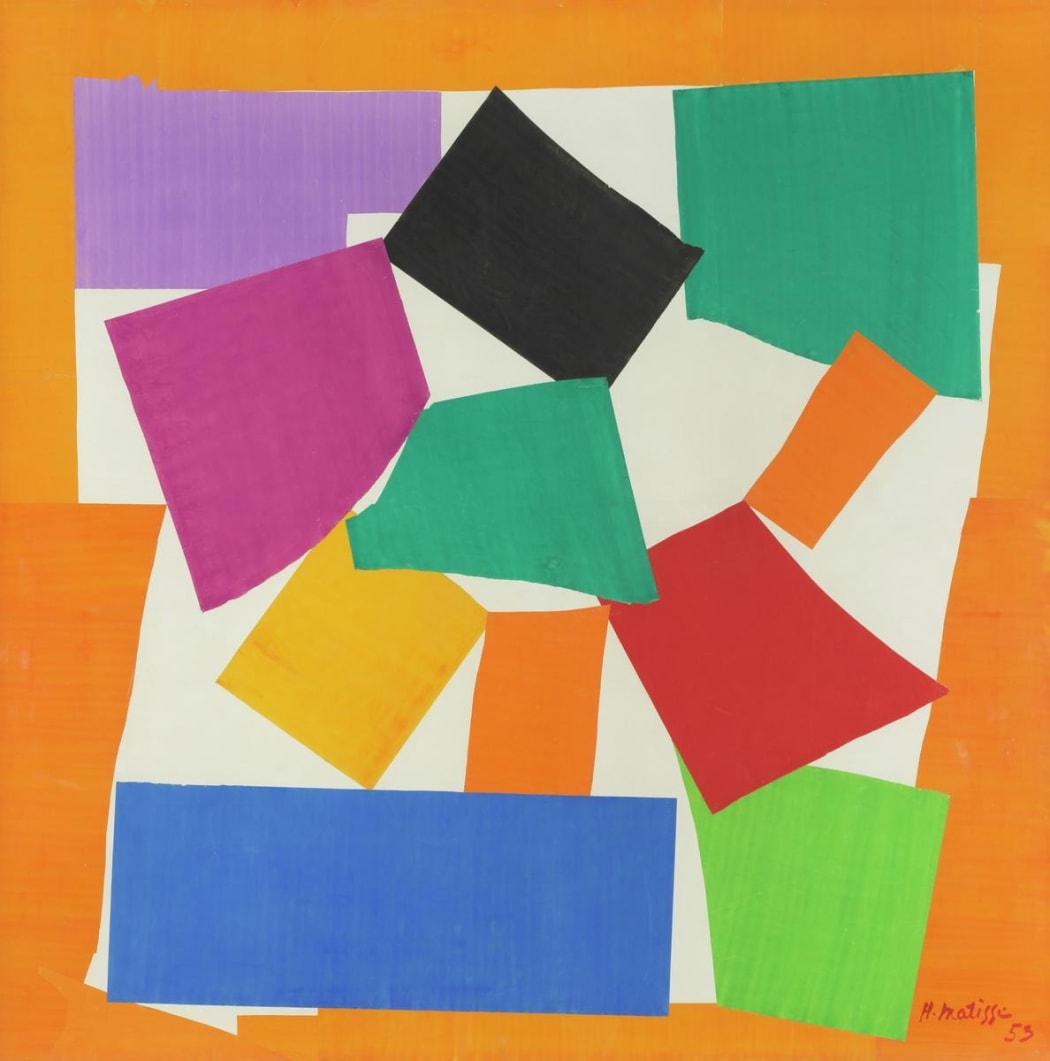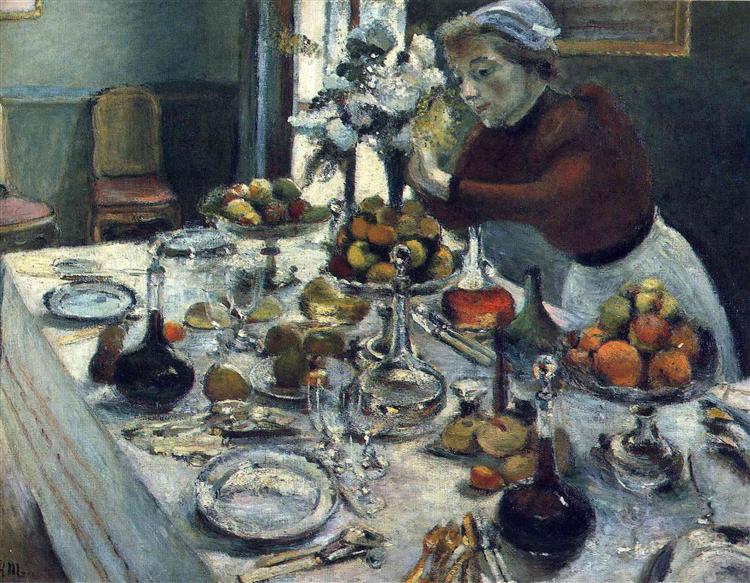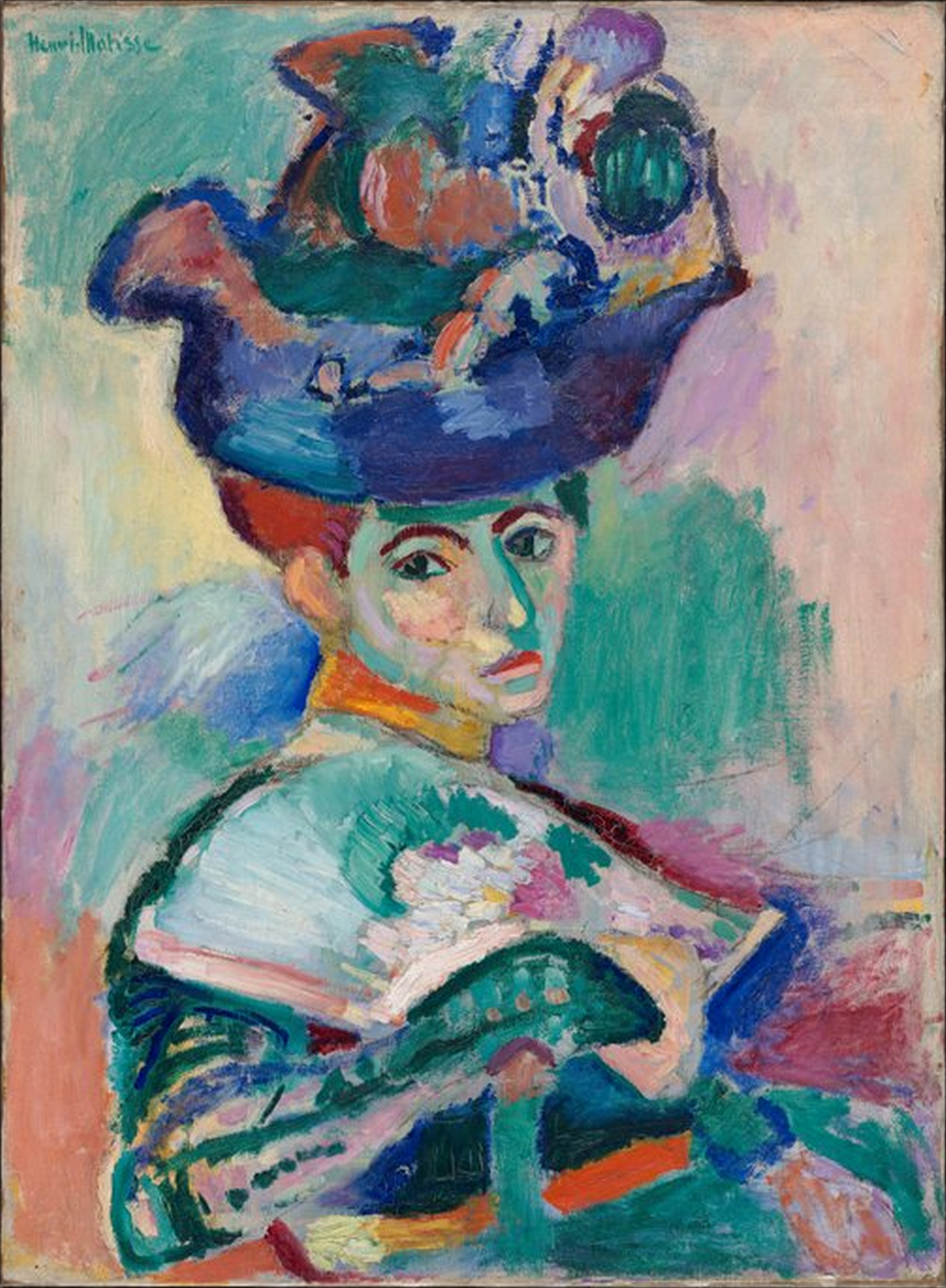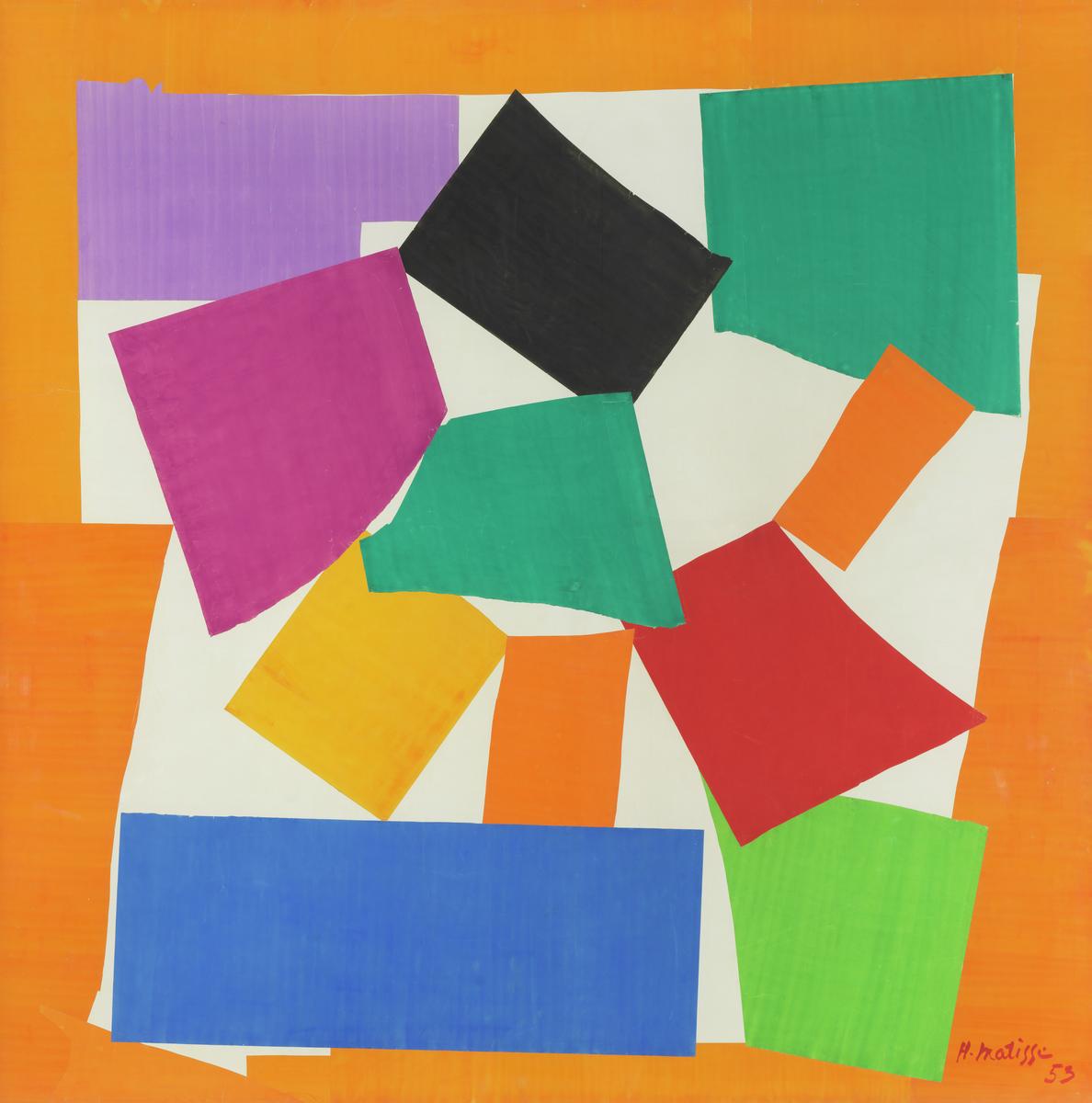
Matisse’s Early Work
Matisse began his artistic journey with traditional genres and styles, reflecting the influence of the great masters he studied in the Louvre. During the late 1890s and early 1900s, Matisse often painted landscapes and still-lifes in a relatively dark palette, heavily influenced by the Dutch masters and Symbolism.
His art education began with conventional training, where he became familiar with the techniques and styles of classical artists. He also made numerous studies and copies of artworks in the Louvre, where he was exposed to a diverse range of artistic traditions.
However, Matisse's early works also revealed a fascination with colour and an ability to render form with a sense of vitality that hinted at his future direction. For instance, ‘Dinner Table’ (1897), characterised by its dark tonality, also shows a budding interest in simplifying forms and experimenting with different effects of light, a feature that would later become prominent in Matisse’s Fauvist phase.
Matisse was strongly influenced by Impressionism, especially by the works of artists like Monet, Renoir, and Cézanne. From them, he learned about the importance of colour, light, and brushwork, which informed his own development as an artist. For instance, Cézanne's approach to form and structure had a deep impact on Matisse, influencing his own understanding of composition and spatial relationships.
With a deep admiration for classical painting, he studied works by artists such as Jean-Baptiste Greuze and Jean-Auguste-Dominique Ingres. Their influence can be seen in Matisse's early works, which often reflect a more traditional style.
The Post-Impressionists Vincent van Gogh and Paul Gauguin also had a significant influence on Matisse. Their expressive use of colour and bold compositions opened up new possibilities for Matisse's own artistic exploration. Gauguin's emphasis on symbolic, emotional use of colour and pattern had a particularly important role in shaping Matisse's approach. Matisse was contemporaries with Picasso, and the two artists had a lifelong artistic dialogue. They influenced each other greatly, sharing a mutual admiration and rivalry.
Matisse's genius lay in his ability to absorb these varied influences and transform them into a distinctive style that was entirely his own. He once said, "I have been no more than a medium, as it were," highlighting how he internalised his influences to create something new and original.

The Fauvist Period
Matisse is often regarded as the leader of Fauvism, an avant-garde movement that flourished in France in the early 20th century. Fauvists were known for their radical use of colour, using it to express emotion rather than merely to depict the world realistically. This use of non-naturalistic and bold colours was considered groundbreaking, and Matisse's work in this period had a significant impact on the course of modern art.
Matisse's style underwent a significant transformation during his Fauvist period (approximately 1904-1907). This phase was named after the French term 'les fauves' meaning 'wild beasts,' due to the movement's use of intense, raw colour and simplified forms. This was a revolutionary approach, freeing colour from its descriptive role and using it as an independent element for emotional expression.
One of the emblematic pieces from this period is 'The Woman with the Hat' (1905), where Matisse applied paint in broad, unmodulated strokes and used non-naturalistic colours that shocked viewers at the 1905 Salon d'Automne in Paris. His work represented a dramatic break with the past, pushing the boundaries of expression and altering the trajectory of modern art.

Matisse's Return to a More Balanced Approach
In the decade that followed the Fauvist period, Matisse began to balance his audacious use of colour with a renewed interest in drawing and structure. His works became more balanced, with compositions carefully constructed through colour and form. A sense of harmony and serenity characterised pieces such as ‘The Red Room (Harmony in Red)’ (1908) and ‘The Dance’ (1910).
As the title suggests, the dominant colour in The Red Room painting is red, which covers not just the wall but also the table and the floor. The pervasive red creates a flat, decorative effect, disregarding the conventional idea of using colour for shading or modelling. It's an expressive use of colour that was radical at the time, a continuation of the Fauvist approach where colour was used independently of its descriptive, representational purpose.
Despite the dominant use of red, the painting is far from monotonous. Matisse cleverly used patterns and other colours to delineate different objects and areas. The blue window, green plant, and the woman's figure serve as counterpoints to the red.
The table, adorned with a red and blue tablecloth, is rendered at a peculiar angle, creating an impression that it stands vertically rather than lying flat. This challenges the traditional perspective and enhances the painting's decorative quality.
Pattern and decoration are essential elements in "The Red Room". The floral pattern on the tablecloth continues onto the wall, blurring the line between the two. This decorative effect adds to the painting's flatness, emphasising its surface rather than creating an illusion of three-dimensional space.
The motifs on the tablecloth and wallpaper, the plant, the fruit bowl, and the woman's dress all contribute to a complex tapestry of shapes and lines. The decorative quality of this painting is a characteristic feature of Matisse's work, reflecting his interest in textiles and non-Western art forms.
The woman at the table is depicted in a simple, stylized manner, serving more as a decorative element than as a portrait. The fruit and the dishes on the table, while common themes in traditional still life, are also presented in a stylized way that emphasises their decorative aspects.

The Nice Period and Later Work
By the 1920s, Matisse entered his 'Nice period,' named after the city in the south of France where he worked. The atmosphere and light of the Mediterranean influenced his palette to become softer and lighter. This period lasted roughly until 1930, though Matisse continued to visit Nice throughout his life. He began creating images of interiors, still lifes, and many depictions of reclining or seated odalisques - women in Turkish dress or sometimes semi-nude.
These works often incorporated elements of exoticism and sensuality. They displayed languid figures surrounded by rich patterns, textiles, and lush, indoor greenery, often with an open window that provided a glimpse of the sea or Nice's light-filled landscape.
The colours used in these paintings were usually more subdued than the vibrant hues of his earlier Fauvist period. The light and atmosphere of the Mediterranean noticeably influenced Matisse's use of colour, leading to a softer and warmer palette.
One famous painting from this period is "Odalisque with a Tambourine" (1926), which embodies many characteristics of Matisse's Nice period, with its leisurely figure, lush decorative elements, and softer colours.
While some critics at the time accused Matisse of abandoning modernism during his Nice period, the artist himself saw it as a necessary phase of exploration and development in his work, stating, "An artist must never be a prisoner. Prisoner? An artist should never be a prisoner of himself, prisoner of style, prisoner of reputation, prisoner of success, etc."

The Cut-Outs: Matisse's Final Artistic Phase
Matisse's final artistic transformation came when ill health prevented him from painting. In the 1940s, he began to work with painted paper cut-outs, creating compositions of great energy and fluidity. His cut-outs, such as 'The Snail' and 'Blue Nudes,' were characterised by an innovative use of colour, form, and space. This period represented not only a new medium but also a culmination of Matisse’s lifelong exploration of colour and form.
From the early academic studies to the revolutionary Fauvism, the balanced post-Fauvist phase, the Nice period, and finally the cut-outs, Matisse's artistic evolution was a fascinating journey. His exploration and reinvention of style testify to his restless creativity and his profound influence on the course of modern art.

Explore our collection of Matisse drawings for sale and contact Andipa via sales@andipa.com or call +44 (0)20 7581 1244.